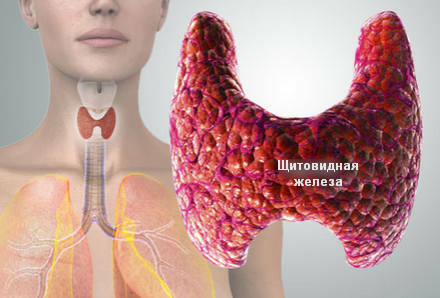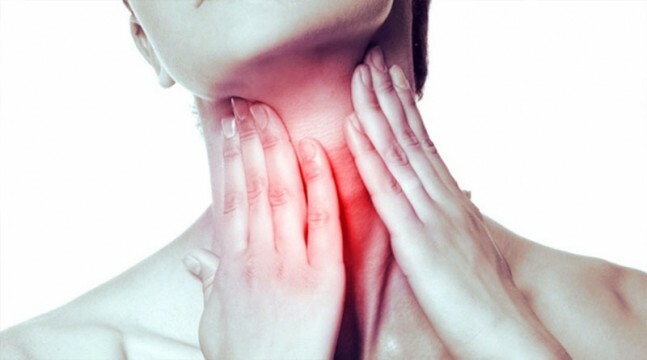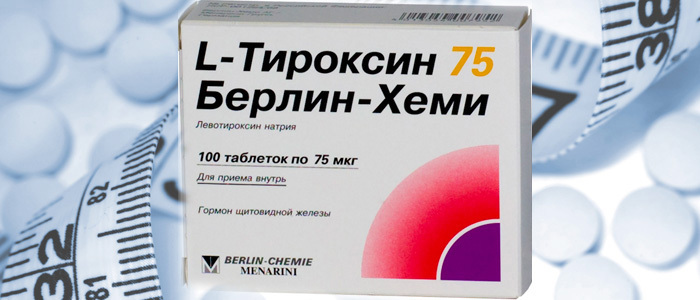Thyroid function disorders occupy a special place among the pathologies of the endocrine system. The most common problems occur in women over the age of 40, which constitute up to 90% of all cases.
The thyroid gland is located on the trachea. Outwardly it resembles a butterfly, in the usual state it is very soft to the touch. In inflammatory diseases, it can grow so much in size that it will interfere with normal breathing and swallowing.
The main purpose of the thyroid gland is the production of hormones T3 and T4, which are responsible for metabolic processes and regulate almost all vital functions of the body.
Classification

In the classification of pathologies of functional disorders of the thyroid, the following groups of diseases are separately identified:
- thyreotide;
- hypothyroidism;
- Primary hyperthyroidism.
Thyroiditis( autoimmune thyroiditis AIT)
There are many varieties of AIT with:
- acute course;
- subacute current;
- chronic course.
Acute AIT can be:
- purulent or nasty;
- local or diffusion.
Subacute AIT is divided into three types:
- lymphocytic;
- granulomatous;
- pneumocystis.
Also additionally characterized by localized lesions of the gland tissues. Sometimes occurs in the postpartum period.
All types of AIT are characterized by the production of antibodies that either "devour" pancreatic tissue( microsomal antibodies), or "kill" the hormones it produces( thyroglobulin antibodies).
Chronic forms are represented by varieties of goitre Hashimito;AIT as consequences of syphilis, tuberculosis and septomycosis;painless or "silent" AIT;cytokine-induced thyroiditis, as well as Ribel's fibro-invasive goiter.
Hypothyroidism
Hypothyroidism is a persistent, reduced secretion of thyroid hormones.
Hypothyroidism is congenital and acquired.
The long form of acquired hypothyroidism has its own name - myxedema. In the absence of treatment, the patient may die.
Primary hyperteriosis

Primary hyperthyroidism( thyrotoxicosis) - increased secretion of thyroid hormones, and, as a consequence, an increase in its size.
There are also secondary and tertiary forms of hyperthyroidism - increased secretion of hormones in the pituitary or hypothalamus, respectively.
Symptoms and complications
Various types of thyroid dysfunction, respectively, cause different signs of manifestations.
AIT, Zob Hashimoto
This group of diseases is characterized by a blurred symptomatology, which at first is masked for the usual overwork and bad mood. Only the characteristic swelling of the lower extremities and some puffiness of the face can attract attention.
Untimely treatment of AIT leads to hyper- or hypothyroidism. Suffice it to quickly manifest the external symptoms that are inherent in every disease.
Postpartum AIT is manifested at 14( with symptoms of hypothyroidism) and 19( signs of hyperthyroidism) week after childbirth.
Hypothyroidism
Owing to an insufficient level of hormones, the following ailments and pathologies occur:
- chills;
- of migraine and pain in the muscles of the limbs;
- sharp decrease in potency;
- menstrual irregularity, premature menopause;
- disorders of the gastrointestinal tract;
- anemia, "angina pectoris" and heart failure;
- increase in liver size.
Patients complain of lethargy, grumbling and constant state when you do not want anything. Significant violations of memory and thought processes lead to intellectual inferiority. Developed speech disorders( slowing down, poor articulation) and the tone of mimic muscles decreases - the face is puffy, the mouth is slightly open.
A persistent state of indifference or constant friendliness can be interrupted by attacks of uncontrolled aggression.
Taking sleeping pills and sedatives, infectious diseases( even simple flu) can cause hypothyroid coma.
Hyperthyroidism

Owing to excessive secretion of thyroid hormones, there may occur:
- increased sweating and a feeling of heat;
- shortness of breath;
- tremor( trembling) of the hands and body against a background of general muscle weakness;
- increased blood pressure, tachycardia and heart rhythm disturbances;
- weight loss with excellent appetite and sufficient nutrition.
One of the most important symptoms is the increase in the size of the gland.
In addition, external changes are visible:
- arises pogoglazost;
- "double vision";
- the patient begins to fear the light;
- thinning skin and nails;
- hair becomes brittle;
- develops baldness.
Pursues a constant sense of thirst, a disorder of the genitourinary system and sleep disorders.
Patients are prone to depressive-hysterical conditions, irritable and experience attacks of inexplicable fear.
By analogy with the hypothyroid coma, disregarding treatment and complicating after infections can cause life-threatening thyrotoxic crises.
Diagnosis
Because, in cases of thyroid dysfunction, it does not always increase in size, the main confirmation of the diagnosis, after anamnesis and examination, are laboratory tests:
- blood test for content:
- pituitary hormone - thyrotropin TSH;
- thyroid hormone - triiodothyronine free T3c;
- thyroid hormone - thyroxine free T4c;
- antibodies to thyroglobulin - AT-TG;
- antibodies to thyroid peroxidase AT-TPO.
- ultrasound diagnostics;
- scintigraphy( radioisotope two-dimensional visualization) - allows to specify the nature and extent of lesions of the gland tissues;
- biopsy of nodular formations.
Treatment of

Over the past 40 years, there has been significant progress in the treatment of thyroid dysfunction, and with early diagnosis and disciplined treatment, you can fully maintain efficiency, well-being and longevity.
Etiotropic therapy
This type of treatment is aimed at curing the root cause of the disease. It is ineffective, but not out of practice. Currently,
- X-ray therapy and other adequate methods of action on the endocrine glands - thyroid gland, hypothalamus and pituitary gland;
- reception of iodine-containing drugs( for iodine deficiency hypothyroidism) - potassium iodide and iodomarine.
Replacement hormone therapy
The intake of hormonal drugs is the basic tactic of treating thyroid diseases.
It is characterized by a gradual, gradual and individual selection of the maximum tolerated doses of T3 - thyroxine and T4 - levothyroxine( L-thyroxine).In connection with serious complications arising in the cardiovascular system, preparations containing T3-triiodothyronine are used only to provide emergency first aid for the hypothyroid coma .
To date, treatment with L-thyroxine gives the greatest possible positive effect.
Supportive therapy
Showing reception:
- preparations of potassium;
- cardioprotectors and cardiac glycosides;
- medication nootropic series;
- vitamin and mineral complexes;
- for women - sex hormones;
- shows compliance with diet and exercise exercise therapy.
Surgical intervention
The operation is performed at the insistence of the attending physician, resection or complete removal of the thyroid gland is performed.
Do not self-medicate and do regular self-examination of the thyroid gland. In the case of even a slight increase in size - immediately consult an endocrinologist.



